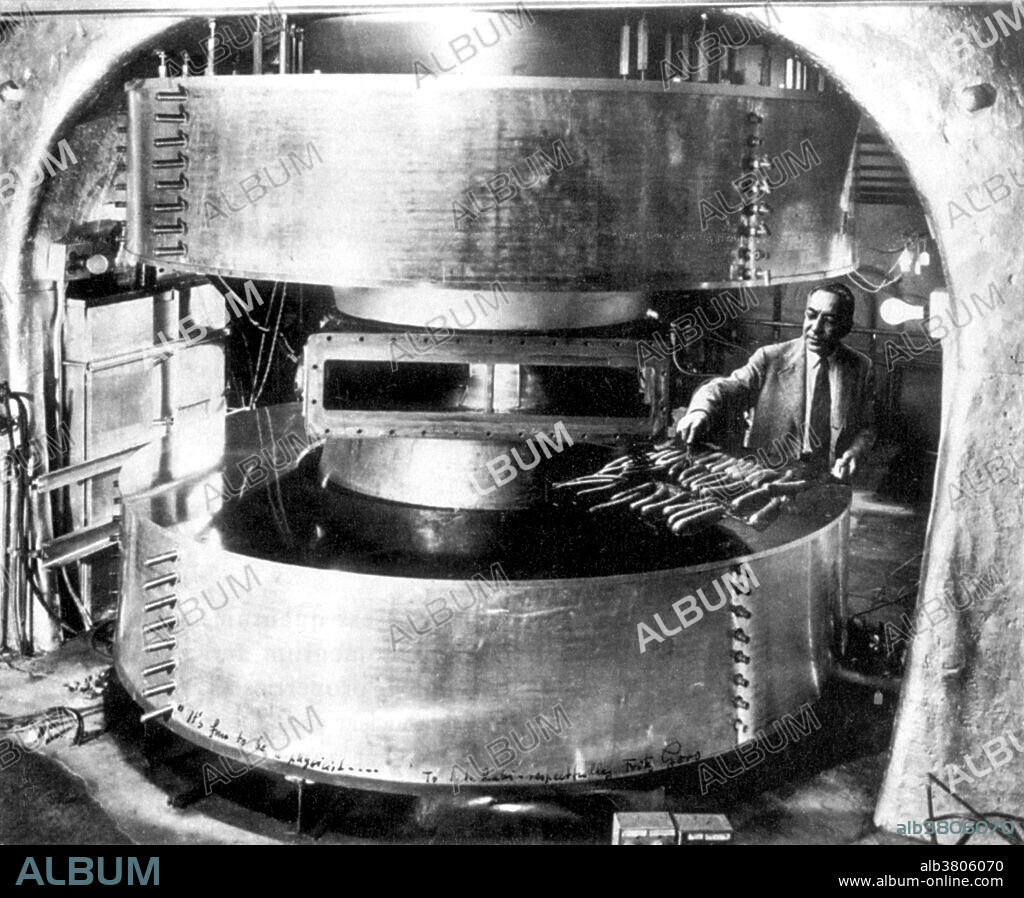alb3806070
Isidor Isaac Rabi, American Physicist

|
Zu einem anderen Lightbox hinzufügen |
|
Zu einem anderen Lightbox hinzufügen |



Haben Sie bereits ein Konto? Anmelden
Sie haben kein Konto? Registrieren
Dieses Bild kaufen

Titel:
Isidor Isaac Rabi, American Physicist
Untertitel:
Siehe automatische Übersetzung
It's fun to be a physicist" reads the inscription on this photograph, doctored to show Rabi frying weiners on the cyclotron in the basement of Pupin. Isidor Isaac Rabi (July 29, 1898 - January 11, 1988) was an Austrian-born American physicist. He was educated in New York, where he spent most of his career at Columbia University. Rabi was awarded the 1944 Nobel Prize for his resonance method for recording the magnetic properties of atomic nuclei. He invented this method in the 1930s. It became the basis of the magnetic resonance techniques of NMR and MRI, and has also been applied to the maser, laser and atomic clock. During WWII he worked on radar at the MIT Radiation Laboratory and on the Manhattan Project. In the 1950s, he helped found CERN, the high-energy physics laboratory. He was also involved in the development of the cavity magnetron, which is used in microwave radar and microwave ovens. Rabi died from cancer in 1988. In his last days, he was reminded of his greatest achievement in a poignant fashion when his physicians examined him using magnetic resonance imaging, a technology that had been developed from his research on magnetic resonance. "I saw myself in that machine", he remarked, "I never thought my work would come to this.
Bildnachweis:
Album / Science Source / New York Public Library
Freigaben (Releases):
Model: Nein - Eigentum: Nein
Rechtefragen?
Rechtefragen?
Bildgröße:
3600 x 2969 px | 30.6 MB
Druckgröße:
30.5 x 25.1 cm | 12.0 x 9.9 in (300 dpi)
Schlüsselwörter:
 Pinterest
Pinterest Twitter
Twitter Facebook
Facebook Link kopieren
Link kopieren Email
Email
